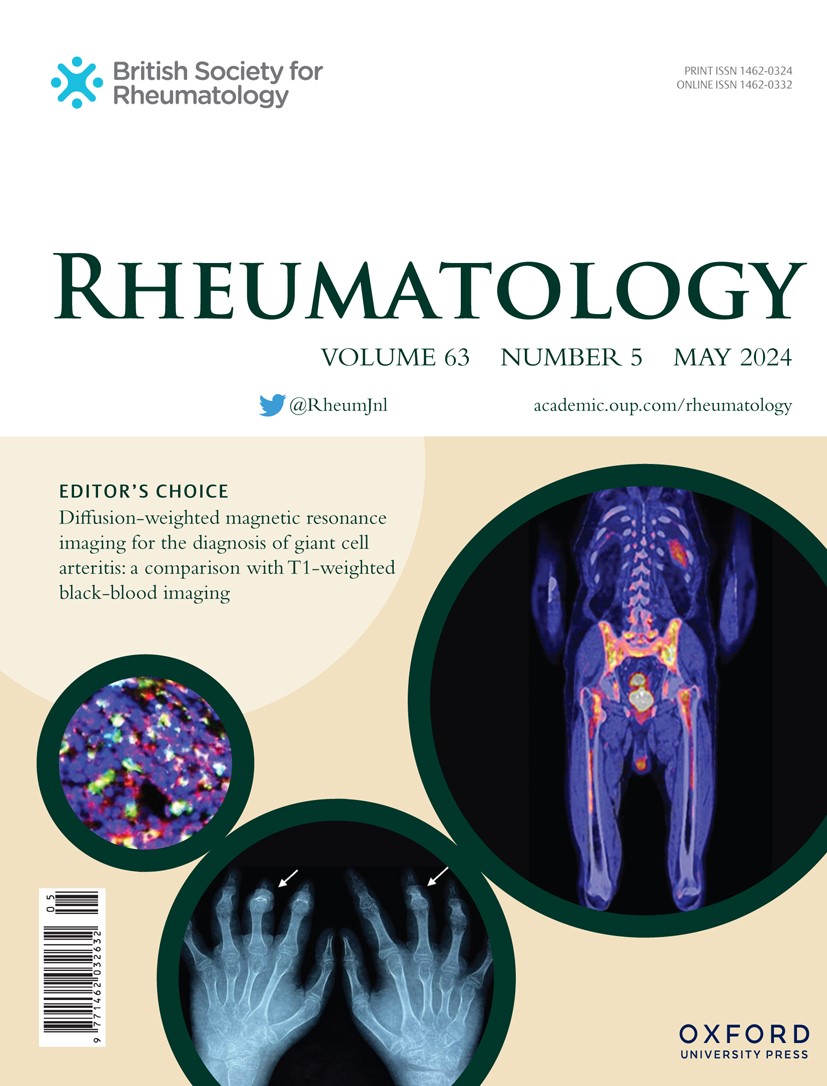Plasma C4d levels correlate with treatment response and renal activity in proliferative lupus nephritis
IF 4.7
2区 医学
Q1 RHEUMATOLOGY
引用次数: 0
Abstract
Objective Investigation of complement factors in lupus nephritis (LN) in relation to treatment response and the impact of underlying genetics of C4. Methods Seventy-seven patients with active LN confirmed by a kidney biopsy and in whom second biopsies had been performed after immunosuppressive treatment were included. Complement factors C3, C4, C4d and C4d/C4 ratio were evaluated at the biopsy time-points. The gene copy number variations of C4 (C4A and C4B) were also investigated. Results At baseline, 60 patients had class III/IV±V, proliferative LN (PLN) and 17 class V, membranous LN (MLN). Levels of C3 and C4 increased and C4d and C4d/C4 decreased after treatment (p< 0.0001), observed in treatment-responding PLN patients but not in MLN. C4d, C4 and C4d/C4 at second biopsies were associated with clinical response in PLN, and low C4d levels were found in PLN with histopathological response (p= 0.008). Renal activity index at second biopsies correlated to C4d and C4d/C4, but not to C3 or C4. C4 gene copy number variations were not associated with clinical or histopathological response. Conclusion All complement markers were affected by immunosuppressive therapy and associated with response to therapy. Levels of C4d and C4d/C4 at follow-up biopsies showed a strong association with both clinical and histopathological response in PLN. The correlation with elevated C4d and C4d/C4 and persisting high activity index on repeated biopsies strengthens the findings on C4d as a promising biomarker for treatment response in PLN. The C4 genetic variations did not influence C4 levels or response to treatment.增殖性狼疮性肾炎患者血浆C4d水平与治疗反应和肾活动相关
目的 研究狼疮肾炎(LN)中的补体因素与治疗反应的关系以及 C4 潜在遗传学的影响。方法 纳入 77 名经肾活检证实为活动性狼疮肾炎的患者,这些患者在接受免疫抑制治疗后进行了第二次活检。在活检时间点对补体因子 C3、C4、C4d 和 C4d/C4 比值进行了评估。此外,还调查了 C4 的基因拷贝数变异(C4A 和 C4B)。结果 基线时,60 名患者为 III/IV±V 级增生性 LN(PLN),17 名患者为 V 级膜性 LN(MLN)。治疗后,C3 和 C4 水平升高,C4d 和 C4d/C4 水平降低(p< 0.0001),这在治疗应答的 PLN 患者中观察到,但在 MLN 患者中未观察到。第二次活检时的C4d、C4和C4d/C4与PLN的临床反应有关,组织病理学反应的PLN中C4d水平较低(p= 0.008)。第二次活检时的肾活动指数与C4d和C4d/C4相关,但与C3或C4无关。C4 基因拷贝数变异与临床或组织病理学反应无关。结论 所有补体标志物都会受到免疫抑制疗法的影响,并与治疗反应相关。随访活检中的C4d和C4d/C4水平与PLN的临床和组织病理学反应有密切关系。C4d和C4d/C4的升高与反复活检时持续的高活性指数相关,这加强了C4d作为PLN治疗反应生物标志物的研究结果。C4基因变异不会影响C4水平或对治疗的反应。
本文章由计算机程序翻译,如有差异,请以英文原文为准。
求助全文
约1分钟内获得全文
求助全文
来源期刊

Rheumatology
医学-风湿病学
CiteScore
9.40
自引率
7.30%
发文量
1091
审稿时长
2 months
期刊介绍:
Rheumatology strives to support research and discovery by publishing the highest quality original scientific papers with a focus on basic, clinical and translational research. The journal’s subject areas cover a wide range of paediatric and adult rheumatological conditions from an international perspective. It is an official journal of the British Society for Rheumatology, published by Oxford University Press.
Rheumatology publishes original articles, reviews, editorials, guidelines, concise reports, meta-analyses, original case reports, clinical vignettes, letters and matters arising from published material. The journal takes pride in serving the global rheumatology community, with a focus on high societal impact in the form of podcasts, videos and extended social media presence, and utilizing metrics such as Altmetric. Keep up to date by following the journal on Twitter @RheumJnl.
 求助内容:
求助内容: 应助结果提醒方式:
应助结果提醒方式:


